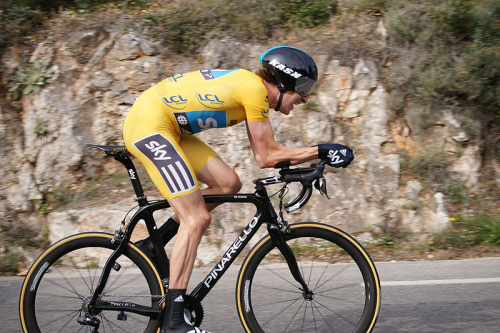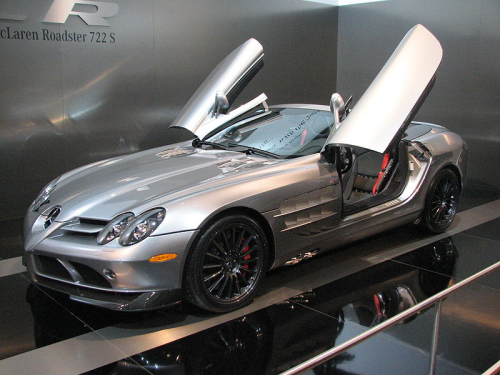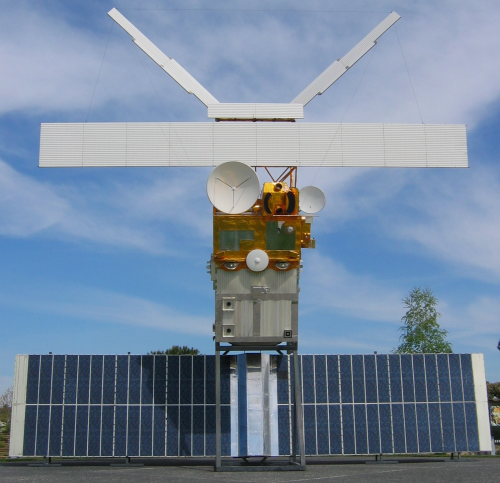![The ALMA telescope uses the properties of carbon fibre in an unusual way. (Source: ALMA [ESO/NAOJ/NRAO.])](/media/hmvfj2zq/87e7d593-4843-4c37-b33c-7f4f008d0bfb.jpg)



The term 'advanced composite' was invented when carbon fibre became commercially available in the '70s. Advanced composites could outperform aluminium. As I understand it, it was Rolls Royce that was trying to find a way of losing mass in turbine blades. The now infamous 'chicken test' (when you launch a frozen chicken at a jet engine running at full speed) made RR lose interest rapidly. It was an expensive failure because RR was funding the R&D of carbon fibre.
This article is restricted to fibres that are commercially available and also man-made.
We all know the range of fibres:
- E-glass;
- S2, T and R glass;
- aramid;
- PAN carbon in various grades;
- rayon-based carbon in various grades; and
- pitch-based carbon in various grades.
Aramid will not be discussed because of its limited use (a result of its poor compression properties), but in ballistic protection it is king.
Why carbon?
The answer is simply that you can choose to use carbon fibre or you are virtually forced to use carbon or something in-between. The statement will be illustrated by looking how a few industries make the decision or what drives the decision.
We will not include the glass fibre reinforced plastics (GRP) industry because it is simply too far away from using carbon on a cost basis alone.
Yachting
Yachting is a very interesting case for carbon fibre and its use is increasing. We will look at a few elements of yachting.
Open class yachts are designed under a minimalist set of rules and this gives designers the freedom to use exotic grades of carbon fibre as far as the budget allows it.
The lighter the yacht is the faster it goes? It is not that simple. Yes, the yacht gets faster as it gets lighter, but in only in tiny amounts because its speed is primarily determined by its length. If a yacht of a certain length gets light enough it will start riding over its bow wave; on the heavy end the yacht needs a following wave to break through and start 'planing.' It rides like a powerboat but does not sustain it. When you get that 40 ft or 60 ft yacht light enough it will start planing in moderate winds: one moment you are doing 12 knots, the next you are doing 18 knots. It is not possible to do this without using carbon.
WHY CARBON? A quantum jump in performance, where rules and budgets allow.
Aircraft interiors
When Boeing or Airbus gives a payload they exclude the entire interior of the aircraft other than the floors, ceilings and overhead bins. The reason is each airline wants to pick and choose seats, galley layouts etc.
The airlines know exactly how much fuel they burn for every added kg on the aircraft. On the other hand they want to offer something different.
As it pans out aircraft interiors are designed with a clear cost/benefit intention. Lightly loaded parts are simply plastic, walls are generally a glass fibre/phenolic, and the seats contain a high percentage of carbon fibre, especially the backrests and Business and First Class bed seats.
It is a crossover case. The cheaper carbon fibre gets, the more it will be used in principle.
WHY CARBON? Price/benefit.
Motor racing
The FIA sets very detailed and strict rules that the teams have to follow. The pinnacle of the sport is Formula 1 (F1) racing. Occasionally a material gets banned i.e. beryllium was banned maybe 10 years ago in engines (beryllium is toxic). In F1 carbon fibre is allowed and weight is a big performance factor. Paradoxically a minimum weight is set and most teams end up with cars below this weight but that gives them the freedom to add other bits and things. The result is the entire chassis of the car, suspension components, wings, brake pads and even gearbox casings are made with carbon fibre. Nothing else is really considered unless it is the engine or mechanical systems and the exhaust.
An unintended side benefit of making a carbon (sometimes hybrid) F1 chassis is the crash performance of the composite. Because fibre composite laminates fail progressively, they absorb large amounts of energy. The nose of a F1 car is called the 'crash box” rather than a 'nose.'
Since the large-scale introduction of carbon composites into F1 there have been no fatalities.
WHY CARBON? Competitive pressure.
Bicycles
In the last 15 years carbon fibre bike frames have virtually taken the largest part of the market. The numbers are astounding. In 1996 a 1.6 kg frame was considered state of the art; it is now down to 950 g or so.
The first carbon bike had carbon tubes and metal lugs (connections). Personally I think the old style design is better but the market will not accept a titanium/carbon frame. The performance advantage of 1 kg on a frame carrying a 85 kg rider is a tiny fraction of a percent yet consumers pay small fortunes for carbon bike products like the frame.
In spite of the fact that the performance advantage is tiny bike manufacturers have convinced everybody that they have to ride a carbon fibre bike. So they do and they pay dearly for it. It has to be carbon because it is about fashion and prestige.
WHY CARBON? Small performance advantage plus fashion, and more design freedom. Competitive pressure.
Satellites
In the case of geosynchronous satellites payload launch costs are around $83 000/kg. Since carbon fibre is by far the strongest material around the question is rather, why not carbon? Carbon is used for the nosecone that protects the satellite, for a lot of structural elements, and for the solar arrays.
In this application carbon fibre literally makes profits, huge ones, and the range of carbons used are almost exclusively the most exotic grades.
WHY CARBON? There is no alternative.
Radio telescopes
Radio telescopes look into the past at old light and via this technique scientists discover many things. One objective is to confirm the Big Bang theory but scientists have also discovered a few alcohol molecules some many light-years away from us. The ALMA telescope (now in operation in Chile in the Atacama desert) uses the properties of carbon fibre in an unusual way.
The ALMA telescope is some 12 m in diameter and features polished aluminium mirrors. A carbon composite base was used to support the mirrors.
Pitch carbon has very high stiffness and has the unusual property of a negative thermal expansion coefficient in the fibre direction and crosswise a positive one. It is possible to design a laminate that has a very low expansion with temperature. The ALMA telescope used this property and the accuracy requirements were very tight. In order to achieve the accuracy required for the moulds the tooling block pattern was set up in an environmentally-controlled space. Using laser measuring equipment the pattern was measured and the temperature was then adjusted until the pattern was the required size.
A mould was made with the same carbon fibre as the parts were to be made of and hence thermal expansion would not affect the parts during the autoclave process.
To cut a long story short, the final product was in spec and the CTE (Coefficient of Temperature Expansion) was found to be less than 0.7 parts per million (ppm) per degree Kelvin (K). The value of steel is 22 ppm/K.
INVAR is a steel alloy that could substitute carbon but the structure would be much heavier and costly.
Other examples include spy satellite camera bodies.
WHY CARBON? Performance combined with economics.
X-ray beds
The more power you need to penetrate an X-ray bed the more power you have to put into the patient. X-ray absorption is related to the density of the material and of course the thickness. During the late '80s the X-ray properties of carbon fibre attracted X-ray machine manufacturers and by the mid '90s carbon was the dominant solution. The strength of the fibre also played a major role is reducing the thickness of cantilevered beds especially.
WHY CARBON? Harm reduction, and structural performance.
Ablative rocket nozzles
Large rockets produce exhaust gas at high Mach numbers and very high temperatures. The gas is expanded through a nozzle with a very specific shape. A special type of composite is used for this nozzle called carbon-carbon. Carbon-carbon is generally a 3D woven component and the preform is impregnated under high pressure with phenolic resin and heated until the resin carbonises. Cracks form and the process is repeated until a monolithic carbon fibre carbon matrix component emerges.
WHY CARBON? Heat and ablative resistance.
Supercars
Increasingly supercars are using carbon fibre composite for structural and decorative purposes. Supercars are sold on reputation, performance and styling. Carbon fibre is also perceived to be some magic ingredient of a supercar.
It is interesting to see how far certain supercar manufacturers are prepared to push the application of carbon composites.
In the Mercedes SLR McLaren (still the benchmark in the application of carbon composites) McLaren went to such extremes as to make really simple parts from carbon that could not be justified on performance advantage or cost. Thousands of dollars could be saved, by forsaking a few kg of mass. It was a policy decision. The structural layout of the car was conventional but one distinct feature was the carbon crash tubes.
As McLaren were developing the SLR, Porsche were developing the Carrera GT. The two cars are compared but they were really completely different animals. The SLR was brutal and the Carrera GT extreme. What stood out about the Carrera GT was an elaborate carbon composite chassis, a complete work of art, and reputedly Porsche used less carbon fibre overall.
A less technical but important reason for using carbon composites in low production volume cars is economics. It is a lot cheaper to create the tooling for body parts for composite parts than it is to make tooling for pressed steel parts. There is a break-even quantity.
WHY CARBON? Supercars are about bragging rights and performance and there is high competition, with cost somewhere in the background.
Attaché case
The French luxury goods company Hermes introduced a woven carbon fibre attaché case that sold for a fortune. The product was so exclusive that it was only sold in the Paris and Tokyo stores. The case was a complete work of art and manufactured by the company then called MOC.
WHY CARBON? Why did Hermes choose to do this? My guess is the sexy look of woven carbon fibre and consumer demand for it on a small scale.
So, the answer to the question 'why carbon' is not uniform across the field. ♦
Zachie de Beer is a consultant with more than 25 years experience in the manufacturing and design of products made from composite materials. He is based in South Africa.






